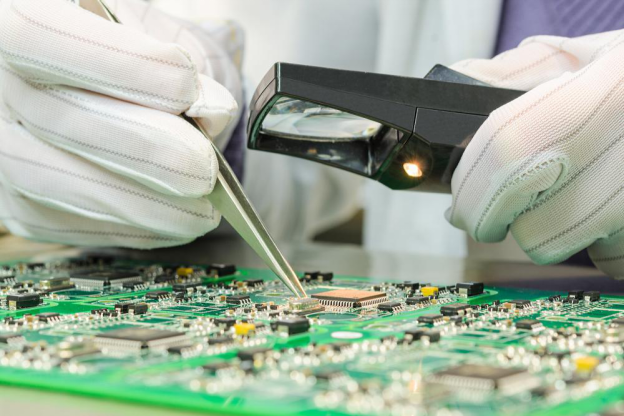When we talk about printed circuit board assembly, two types of assembly technologies dominate the domain: surface mount technology and through hole technology.
Every PCB produced is assembled using either of the two technologies or both technologies in combination.
What's the difference between them?

Overview of Surface Mount Technology
Surface mount technology employs solder paste printing technique for assembling components on a PCB. During the assembly process, bare PCBs are placed inside a screen printer which applies solder paste on the solder pads present on boards. A pick-and-place machine then mounts the The components of the solder pads and a reflow soldering oven melts the applied solder paste to stick the components onto boards.
Surface mount technology is great for producing miniature circuits as it provides convenient assembly for components having small footprint. In fact, using surface mount technology, You can even assembly components that are too small to be seen by naked eyes.
Having said that it is faster and more cost-effective PCB assembly in comparison to through hole technology. Having said that, it's worth pointing out that surface mount technology is not suitable for all applications.
Assemblies that are expected to be squeezing to the high-resistance, and the high voltages should not be produced by surface mount technology; the assembly does not provide strong hold for the components.
Overview of Through Hole Technology
Through hole technology is the older of two assembly technologies and is mostly used for manufacturing bulkier assemblies.How PCBs are assembled using through hole technology?
In the through hole assembly process, PCBs are first drilled with holes using a drilling or hole punching machine; The
boards are drilled to accommodate the components. The boards are drilled, a placement machine affixes the components on boards by inserting the leads of the components inside the drilled holes. The inserted leads are then soldered to the solder pads present on the other side of the Board inside a reflow soldering equipment.
Through Hole Technology Offers Robust Assembly makeups. PCBs Assembled a using through Hole Technology CAN Ably Endure PHYSICAL Stress Due to Their strong Construction. It's Why, through Hole PCBs are of Preferred for Military and Aerospace Applications.
The While through Hole Assembly the Provides strong Mechanical Bonds for Electronic Components , the
hole of PCBs are expensive to produce because of the additional drilling required during the production process. It limits the available routing area for traces on a PCB since the holes must be drilled through the layers of the board .
the Looking for A PCB Assembly Service to Help you with your Product Design?
Topscom IS AT your Service!
We're one of the leading PCB assembly service providers specializing in both through-hole and surface mount PCB assembly. Besides providing PCB assembly services, we also help in the design and fabrication of PCBs.
Contact us today to discuss your project.


